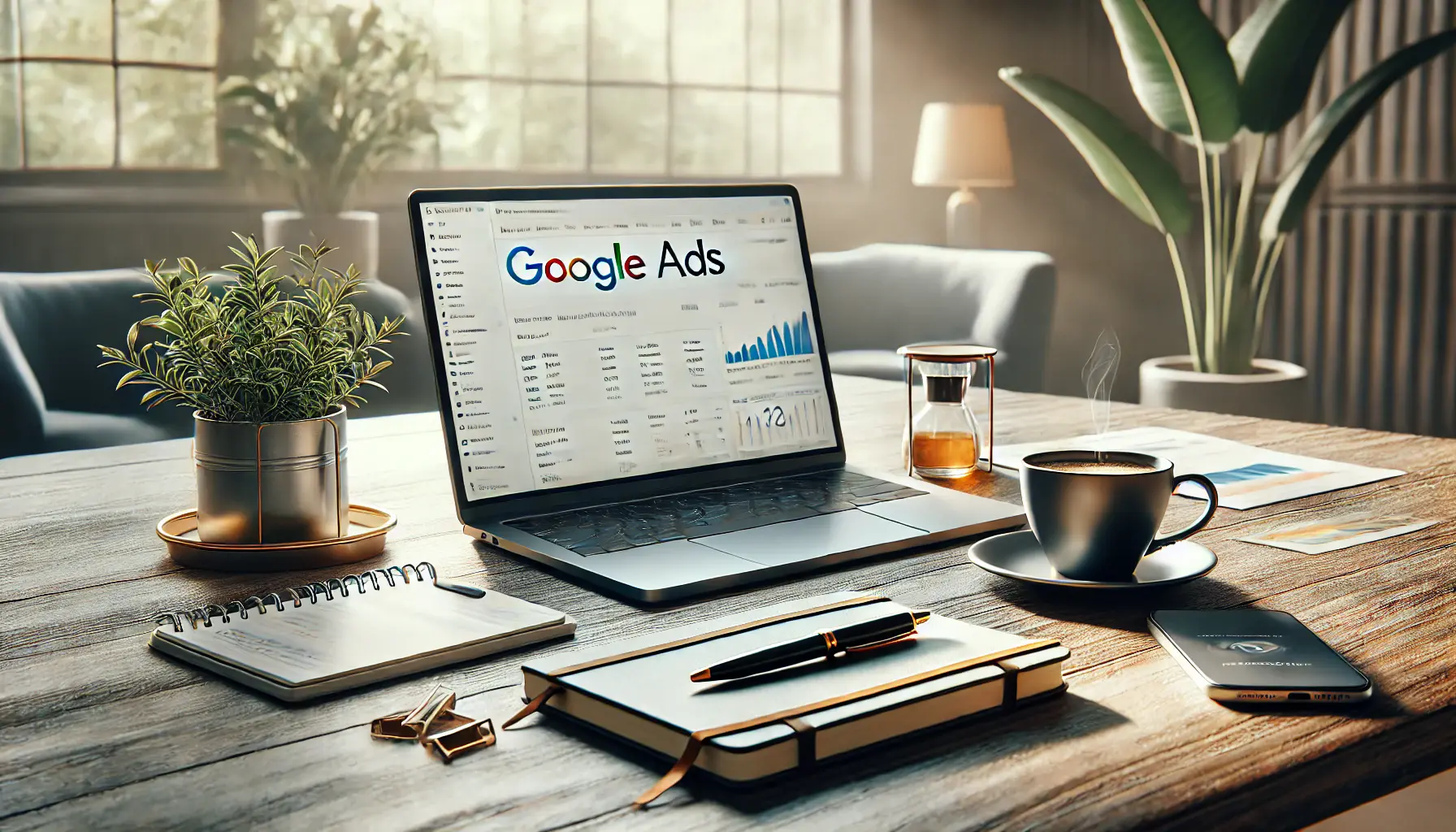Optimizing search ads has become a pivotal strategy for businesses aiming to maximize their return on investment (ROI) in the digital marketing realm.
With the vast majority of consumers turning to search engines to find products and services, the ability to effectively capture and convert this audience through well-crafted search ads is invaluable.
This article delves into the intricacies of optimizing search ads, specifically focusing on strategies that enhance visibility, engagement, and conversions, thereby ensuring a better ROI for businesses leveraging platforms like Apple Search Ads and Google Ads.
The landscape of online advertising is continuously evolving, with search ads standing out as a crucial component of digital marketing strategies.
The effectiveness of these ads, however, hinges on the ability to optimize them for the target audience while also managing costs efficiently.
This comprehensive guide aims to equip businesses with the knowledge and tools necessary to refine their search ad campaigns, focusing on achieving higher conversion rates and maximizing ROI.
- Understanding the Basics of Search Ads
- Strategies for Keyword Optimization
- Ad Copy and Creative Optimization
- Landing Page Optimization
- Budget Management and Bid Strategies
- Advanced Targeting Techniques
- Measuring and Analyzing Campaign Performance
- Maximizing ROI Through Strategic Search Ads Optimization
- FAQs on Optimizing Search Ads for Better ROI
Understanding the Basics of Search Ads
Before diving into optimization strategies, it’s essential to grasp the fundamentals of search ads.
These are paid advertisements that appear on search engine results pages (SERPs) based on the keywords that users type into the search bar.
The primary goal of search ads is to promote products, services, or content to users actively seeking related information.
The effectiveness of these ads is measured through various metrics, including click-through rates (CTR), conversion rates, and ultimately, the ROI they generate for the advertiser.
Search ads operate on a pay-per-click (PPC) model, meaning advertisers only pay when a user clicks on their ad.
This model emphasizes the importance of targeting the right keywords and crafting compelling ad copy to attract potential customers.
Additionally, the placement of search ads on the SERP is determined through an auction system, where advertisers bid on keywords relevant to their target audience.
The bid amount, combined with the ad’s quality score—a metric that evaluates the relevance and quality of the ad—determines the ad’s placement.
Key Components of Effective Search Ads
An effective search ad campaign is built on several key components, each playing a crucial role in attracting and converting users.
Firstly, keyword selection is paramount.
Advertisers must choose keywords that are highly relevant to their offerings and frequently used by their target audience.
Secondly, crafting compelling ad copy that resonates with the audience and clearly communicates the value proposition is essential.
This includes a strong headline, descriptive text, and a clear call-to-action (CTA).
Another critical component is the landing page to which the ad directs users.
This page should be optimized for conversions, providing a seamless user experience and relevant information that encourages users to take the desired action, whether it’s making a purchase, signing up for a newsletter, or downloading a resource.
Ensuring the landing page is mobile-friendly and loads quickly is also crucial, as these factors significantly impact user engagement and conversion rates.
Optimizing search ads is not just about increasing visibility; it’s about strategically targeting the right audience with compelling ad copy and a user-friendly landing page to maximize conversions and ROI.
Strategies for Keyword Optimization
Keyword optimization stands at the core of successful search ad campaigns.
Selecting the right keywords allows businesses to target their ads effectively, reaching users with high intent to purchase or engage.
Here are strategies to enhance your keyword optimization:
Conducting Comprehensive Keyword Research
Begin with a thorough keyword research process to identify terms and phrases your target audience uses when searching for products or services similar to yours.
Utilize tools like Google’s Keyword Planner or SEMrush to gather data on search volume, competition level, and cost-per-click (CPC) estimates.
This initial step is crucial for building a solid foundation for your search ad campaigns.
Consider incorporating both broad and specific keywords to capture a wide range of search intents.
Broad keywords help in reaching a larger audience, while specific, long-tail keywords target users closer to making a purchase decision, often resulting in higher conversion rates.
Utilizing Negative Keywords
Negative keywords are a powerful tool to refine your targeting and prevent ads from showing up for irrelevant searches.
By specifying negative keywords, you can exclude search terms that are not a good match for your product or service, thereby saving your budget for more qualified leads.
Regularly updating your negative keyword list is essential for maintaining the efficiency of your search ad campaigns.
- Keyword Match Types: Leverage different keyword match types (broad, phrase, exact) to control how closely the user’s search query must match your keywords. Experimenting with match types can help you find the right balance between reach and relevance.
- Search Query Analysis: Regularly review the search terms report in your ad platform to understand how users are finding your ads. This analysis can reveal new keyword opportunities and inform adjustments to your existing keyword strategy.
Optimizing for User Intent
Understanding the intent behind the keywords used by your target audience is crucial for crafting effective search ads.
Keywords can indicate different stages of the buyer’s journey, from awareness to consideration to decision.
Tailor your ad copy and landing pages to match the user’s intent, providing the most relevant and compelling experience possible.
For instance, a user searching for “best running shoes” is likely in the research phase, while someone searching for “buy running shoes online” is closer to making a purchase.
Recognizing these nuances in search intent can significantly enhance the effectiveness of your search ad campaigns.
Incorporating semantic keywords—variations or related terms—into your campaigns can also capture a broader audience while maintaining relevance to your core offerings.
Ad Copy and Creative Optimization
The power of your search ads significantly hinges on the quality and relevance of your ad copy.
Engaging and persuasive ad copy can dramatically improve your click-through rates (CTR) and conversions.
Here’s how to optimize your ad copy and creative elements:
Crafting Compelling Headlines
Your ad headline is the first thing users notice.
It should be attention-grabbing, incorporating the main keyword to ensure relevance.
Effective headlines often address a need, ask a question, or offer a solution.
Experiment with different headlines to determine which resonates most with your target audience.
Remember, the headline should align with the landing page content to provide a cohesive user experience.
Discrepancies between the ad and the landing page can lead to confusion and reduced conversion rates.
Writing Descriptive and Persuasive Ad Text
The body of your ad should clearly communicate the value proposition of your product or service.
Highlight benefits, features, or unique selling points that set you apart from competitors.
Use action-oriented language to encourage users to take the next step, whether it’s making a purchase, signing up for more information, or downloading a resource.
- Include a Clear Call-to-Action (CTA): Your CTA should be direct and tell users exactly what action you want them to take. Phrases like “Buy Now,” “Sign Up Today,” or “Learn More” are effective in driving user action.
- Utilize Ad Extensions: Ad extensions expand your ad with additional information, links, or call buttons. They not only make your ad more prominent but also provide users with more pathways to engage with your business. Use sitelink, callout, and structured snippet extensions to enhance your ad’s appeal.
Optimizing Display URLs
The display URL in your ad, while not clickable, contributes to the overall attractiveness and credibility of your ad.
Including keywords in your display URL can reinforce relevance and encourage clicks.
Ensure the display URL accurately reflects the landing page to maintain consistency and trust.
Testing and refining your ad copy and creative elements is a continuous process.
Utilize A/B testing to compare different versions of your ads to identify which combinations of headlines, ad text, and CTAs perform best.
This iterative approach allows you to continuously improve your ad effectiveness and ROI.
A well-optimized ad copy and creative strategy can significantly enhance the performance of your search ads, leading to higher engagement, better quality scores, and increased conversions.
Landing Page Optimization
The effectiveness of your search ads is intrinsically linked to the quality of your landing pages.
A well-optimized landing page can significantly boost conversions by providing a seamless and relevant experience for visitors.
Here’s how to ensure your landing pages are primed for optimal performance:
Ensuring Relevance and Clarity
Your landing page should directly relate to the ad that visitors clicked on, with a clear and consistent message.
Ensure that the headline, content, and images on the landing page match the promise made in the ad.
This consistency not only improves user experience but also contributes to a higher conversion rate by meeting the visitor’s expectations.
Additionally, the value proposition of your product or service should be immediately apparent.
Use clear, concise language to explain how the visitor will benefit from what you’re offering.
Highlight key features, advantages, and any unique selling points that differentiate you from competitors.
Optimizing for User Experience (UX)
A positive user experience is crucial for keeping visitors engaged and encouraging them to take action.
Ensure your landing page is easy to navigate, with a logical layout and intuitive design.
Key elements such as the CTA button should be prominently displayed and easy to find.
- Mobile Optimization: With an increasing number of users accessing the internet via mobile devices, your landing page must be mobile-friendly. This means fast loading times, responsive design, and touch-friendly navigation.
- Page Load Speed: Slow loading pages can lead to high bounce rates. Use tools like Google PageSpeed Insights to check your page speed and implement recommended improvements to enhance loading times.
Implementing Strong Call-to-Actions (CTAs)
A compelling CTA is the linchpin of your landing page, guiding visitors towards the desired action.
Whether it’s making a purchase, signing up for a newsletter, or downloading a guide, your CTA should be clear and persuasive.
Use action-oriented language and make it stand out with contrasting colors or design elements.
Test different CTA placements, wording, and designs to determine what works best for your audience.
Sometimes, minor changes can lead to significant improvements in conversion rates.
Utilizing A/B Testing
A/B testing, or split testing, is a valuable tool for optimizing landing pages.
By creating two versions of a page and directing traffic to both, you can compare performance and identify which elements contribute to higher conversions.
Test different headlines, images, CTA buttons, and content layouts to continuously refine and improve your landing page’s effectiveness.
Regularly reviewing and updating your landing pages based on performance data and user feedback is essential for maintaining their effectiveness over time.
Budget Management and Bid Strategies
Effective budget management and strategic bidding are crucial for maximizing the ROI of your search ads.
By allocating your budget wisely and utilizing the right bid strategies, you can enhance ad performance and achieve your marketing goals within your financial constraints.
Setting and Adjusting Your Budget
Start by setting a realistic budget based on your marketing objectives and the competitive landscape of your industry.
It’s important to allocate enough budget to test different strategies and gather meaningful data, but also to remain flexible.
Monitor your ad spend closely and be prepared to adjust your budget based on campaign performance and changing market conditions.
Consider allocating more budget to campaigns or ad groups that are performing well and less to those that are not meeting your expectations.
This dynamic approach allows you to optimize your overall ad spend and focus resources on the most profitable areas.
Choosing the Right Bid Strategy
Google Ads offers several bid strategies designed to help you meet specific goals, such as maximizing clicks, conversions, or achieving a target return on ad spend (ROAS).
The choice of bid strategy should align with your campaign objectives:
- Maximize Clicks: Ideal for driving traffic to your website. Google sets bids to get as many clicks as possible within your budget.
- Target CPA (Cost Per Acquisition): Useful for driving conversions while targeting a specific cost per action.
- Target ROAS: Best for campaigns focused on achieving a specific return on ad spend. Google adjusts bids to maximize conversion value while reaching your target ROAS.
Experiment with different bid strategies to find what works best for your campaigns.
It’s also beneficial to use manual bidding for campaigns where you have specific insights or for keywords with high strategic importance.
Utilizing Smart Bidding
Smart Bidding is a set of automated bid strategies that use machine learning to optimize for conversions or conversion value in each auction.
This approach can take the guesswork out of setting bids and help improve campaign performance.
Smart Bidding strategies include Enhanced CPC (Cost Per Click), Target CPA, and Target ROAS, among others.
When using Smart Bidding, it’s crucial to provide Google Ads with accurate conversion tracking data.
The more data Google has, the better it can optimize your bids for the best possible outcomes.
Regular review and analysis of your bidding strategies and budget allocation are essential for ongoing optimization and ensuring that your search ad campaigns continue to deliver a strong ROI.
Advanced Targeting Techniques
Advanced targeting techniques allow advertisers to refine their audience selection, ensuring that search ads are displayed to users most likely to convert.
By leveraging these sophisticated targeting methods, businesses can significantly improve the efficiency and effectiveness of their ad campaigns.
Demographic Targeting
Demographic targeting enables advertisers to reach users based on age, gender, income, and other demographic factors.
This level of specificity allows for the creation of highly tailored ad campaigns that resonate with the target audience.
For instance, a luxury brand might focus on higher-income brackets, while a university might target ads towards users in a certain age range.
Combining demographic targeting with other targeting methods can further refine your audience and enhance campaign performance.
It’s essential to analyze your campaign data regularly to adjust your targeting strategies and ensure they align with your marketing objectives.
Interest and Behavior Targeting
Interest and behavior targeting goes beyond demographics to reach users based on their interests, habits, and online behaviors.
This can include targeting users who have shown interest in similar products or services, or who have specific browsing habits that align with your offering.
- Remarketing: Remarketing is a powerful tool that targets users who have previously interacted with your website or mobile app. By showing tailored ads to users who have already shown interest in your products or services, you can increase conversion rates and boost ROI.
- In-Market Audiences: Target users who are actively researching or planning to buy products or services similar to yours. Google identifies these users based on their search and browsing behavior, allowing you to reach potential customers at a critical point in their purchase journey.
Geographic and Location Targeting
Geographic targeting allows advertisers to show ads to users based on their location.
This can range from broad targeting, such as entire countries or regions, to more granular targeting, like cities or even specific zip codes.
Location targeting is particularly useful for local businesses or companies with a physical presence, as it enables them to reach users in their immediate area.
Advanced location options also allow for targeting based on users’ location intent, not just their physical location.
This means you can target users searching for products or services in your area, even if they’re not currently located there.
Leveraging advanced targeting techniques requires a deep understanding of your audience and their behaviors. Tailoring your search ad campaigns using these methods can lead to higher engagement, better conversion rates, and a more efficient use of your advertising budget.
Measuring and Analyzing Campaign Performance
To ensure the ongoing success of your search ads, it’s critical to measure and analyze campaign performance meticulously.
This process enables advertisers to identify what’s working, what isn’t, and where adjustments can be made to improve ROI.
Key Performance Indicators (KPIs)
Identifying the right KPIs is essential for effective campaign analysis.
Common KPIs for search ads include Click-Through Rate (CTR), Conversion Rate, Cost Per Click (CPC), Cost Per Acquisition (CPA), and Return On Ad Spend (ROAS).
Each of these metrics provides insights into different aspects of your campaign’s performance, from how compelling your ads are to how efficiently you’re using your budget.
Analyzing these KPIs allows you to gauge the health of your campaigns and make data-driven decisions.
For example, a low CTR might indicate that your ad copy isn’t resonating with your target audience, while a high CPA could suggest that your targeting needs refinement.
Conversion Tracking
Conversion tracking is a powerful tool that measures the actions users take after clicking on your ads.
This can include making a purchase, signing up for a newsletter, or completing a contact form.
By setting up conversion tracking, you can understand how effectively your ads are driving these desired actions.
Accurate conversion tracking is crucial for calculating ROI and making informed budgeting decisions.
It allows you to attribute value to different campaigns and ad groups, helping you allocate your budget more effectively.
Utilizing Analytics Platforms
Google Ads provides a wealth of data, but integrating with Google Analytics can offer even deeper insights.
Google Analytics allows you to see how users interact with your website after clicking on your ads, providing information on user behavior, bounce rate, and the paths users take towards conversion.
This integration can reveal valuable insights, such as which ads are driving the most valuable traffic to your site or which landing pages are most effective at converting visitors.
These insights can then inform optimizations to both your search ads and your website content.
A/B Testing for Continuous Improvement
A/B testing, or split testing, is a method of comparing two versions of an ad or landing page to see which performs better.
By systematically testing different elements of your campaigns, you can continually refine and improve your ads for better performance.
Effective A/B testing involves changing one variable at a time, whether it’s the ad copy, the landing page design, or the call-to-action.
This approach ensures that you can accurately attribute any changes in performance to the variable that was altered.
Regular measurement and analysis are the keys to optimizing search ad campaigns for better ROI. By focusing on the right KPIs, tracking conversions accurately, and leveraging analytics and testing, advertisers can make informed decisions that drive campaign success.
Maximizing ROI Through Strategic Search Ads Optimization
In the dynamic world of digital marketing, mastering the art of search ads optimization is not just a strategy but a necessity for businesses aiming to thrive online.
The journey through understanding the basics, keyword optimization, crafting compelling ad copies, landing page enhancements, budget management, advanced targeting techniques, and the meticulous measurement of campaign performance encapsulates a holistic approach to achieving superior ROI.
This article has navigated through these critical components, each serving as a cog in the vast machinery of search advertising success.
Key Takeaways for Enhanced Search Ads Performance
Optimizing search ads for better ROI is a multifaceted endeavor, demanding attention to detail, a deep understanding of your audience, and an unwavering commitment to continuous improvement.
Here are the pivotal takeaways that businesses should integrate into their search ads strategies:
- Keyword Optimization: The cornerstone of effective search ads, requiring thorough research and strategic selection to ensure your ads reach the intended audience.
- Ad Copy Excellence: Crafting ad copies that resonate with your audience, compelling them to click through, is an art that significantly impacts your campaign’s success.
- Landing Page Optimization: A seamless and relevant landing page experience is crucial for converting clicks into conversions, emphasizing the importance of message consistency and user experience.
- Budget and Bidding Wisdom: Smart budget allocation and choosing the right bid strategy are essential for maximizing ad spend efficiency and campaign performance.
- Advanced Targeting: Employing sophisticated targeting techniques allows for a more refined approach, reaching users most likely to engage and convert.
- Performance Analysis: Regular measurement and analysis of campaign performance enable advertisers to make data-driven decisions, fostering an environment of continuous optimization.
As businesses navigate the complexities of search ads optimization, the pursuit of better ROI remains the guiding star.
By embracing these strategies and maintaining a laser focus on performance analysis and user engagement, advertisers can unlock the full potential of their search ad campaigns.
The journey towards search ads mastery is ongoing, with each step offering valuable insights and opportunities for growth.
Embracing the Future of Search Advertising
The landscape of search advertising is ever-evolving, with new technologies, consumer behaviors, and competitive dynamics shaping the strategies that drive success.
Businesses that stay ahead of these trends, continuously refining and adapting their approaches, will not only optimize their ROI but also secure a competitive edge in the digital marketplace.
The future of search advertising promises more personalization, automation, and integration, offering exciting opportunities for those ready to explore and innovate.
In conclusion, optimizing search ads for better ROI is a comprehensive process that demands expertise, creativity, and strategic foresight.
The principles outlined in this guide provide a roadmap for businesses seeking to enhance their online presence and achieve measurable success through search advertising.
As we look to the future, the potential for growth and innovation in search ads is boundless, waiting for those daring enough to seize it.
If you're seeking expertise in Apple Search Ads campaigns, visit our service page for professional management!
FAQs on Optimizing Search Ads for Better ROI
Discover key insights on enhancing your search ad campaigns for optimal returns.
Choosing relevant keywords, focusing on user intent, and leveraging tools like Google’s Keyword Planner are essential for targeting the right audience.
Craft compelling ad copies with clear CTAs, utilize ad extensions, and ensure your ads are highly relevant to the search queries.
Yes, using retargeting strategies can significantly improve ROI by targeting users who have previously interacted with your website.
Choosing the right bidding strategy, like Target CPA or Target ROAS, is crucial for managing your budget and maximizing conversions.
Ad relevancy is vital for achieving higher quality scores, which can lead to better ad placements and lower costs per click.
Absolutely. Optimized landing pages that match the ad’s promise can significantly increase conversion rates and enhance ROI.
Regularly reviewing and adjusting your campaigns based on performance data is key to staying competitive and improving ROI.
Mobile optimization is crucial as a significant portion of searches occur on mobile devices, affecting both ad visibility and user engagement.











